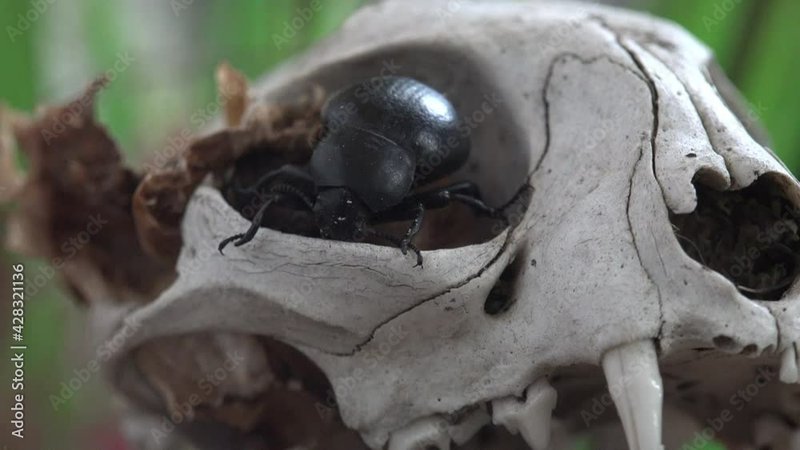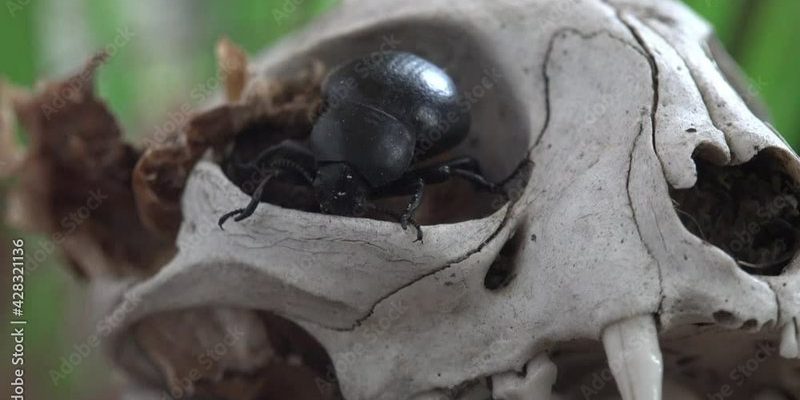
Have you ever stumbled upon a shiny little creature rolling a ball of dung across the ground? That’s not just any bug; it’s a scarab beetle. These fascinating insects have been around for millions of years, capturing not only our attention but also our imagination. They have a rich history tied to ancient cultures, especially in Egypt, where they were viewed as symbols of rebirth and protection.
But there’s so much more to these beetles than their cultural significance. With over 30,000 different species, scarab beetles come in various shapes, sizes, and colors. They play important roles in their ecosystems, from recycling waste to aiding in plant pollination. Their unique behaviors and physical adaptations make them an interesting subject to explore. So, let’s dive deeper into the world of the scarab beetle!
What is a Scarab Beetle?
A scarab beetle belongs to the family Scarabaeidae, and these insects can be identified by their distinctive rounded bodies and unique horns. Their sizes range from just a few millimeters to several centimeters, with some species like the Hercules beetle boasting impressive sizes. You might wonder why they are often associated with dung. Well, many scarab beetles, especially the dung beetles, are known for their remarkable ability to recycle animal waste. By feeding on dung, they help break down waste materials, turning them into nutrient-rich soil.
Not only do scarabs help the environment, but they also showcase some pretty incredible adaptations. For example, their tough exoskeleton not only protects them but also minimizes water loss, making them adaptable to dry environments. This resilience allows them to thrive in various habitats, from woodlands to deserts.
Another interesting note is their role in the food web. Even though they’re tough little bugs, scarab beetles are prey for many larger animals, including birds, reptiles, and mammals. Their unique appearance and behaviors have also made them popular subjects in studies on evolution and ecology.
Types of Scarab Beetles
Scarab beetles come in diverse varieties, each with unique behaviors and adaptations. Some of the more well-known types include the dung beetle, the horned scarab, and the rose beetle. Dung beetles, as their name suggests, primarily feed on feces. They are essential for nutrient recycling in ecosystems, breaking down waste and enriching the soil. They form balls of dung, which they roll away to find a suitable place to lay their eggs.
The horned scarab beetle, another fascinating type, is recognized for its large, pronounced horns. These horns can be quite impressive, often used in battles with other males for dominance and mating rights. They showcase the scarab beetle’s intriguing social behaviors and mating rituals. On the flip side, we have rose beetles, which are known for their striking colors and are often found feeding on flowers. They play a significant role in pollination, benefiting both plants and the environment.
While not all scarab beetles have the same diet or ecological role, their diversity showcases nature’s incredible creativity. Each species has adapted in unique ways to survive and thrive in their specific environments, making them a vital part of biodiversity.
Habitat and Distribution
Scarab beetles can be found all over the world, occupying a wide range of habitats. You can spot them in tropical rainforests, deserts, grasslands, and even temperate forests. Their adaptability is impressive; some species thrive in arid environments while others prefer moist, rich soils. Dung beetles, for example, are commonly found in regions with abundant wildlife since their diet relies heavily on animal droppings.
The distribution of scarab beetles is primarily determined by their dietary needs and habitat preferences. In forests, they can often be seen on the forest floor, helping to decompose organic matter. On the other hand, desert-dwelling species have adapted to survive with limited water sources and extreme temperatures. This versatility lets scarab beetles flourish in almost any ecosystem.
Interestingly, their distribution isn’t random; specific species may be more prevalent in certain areas depending on local climate and vegetation. For instance, in Africa, you’ll encounter a lot of species that have cultural significance, such as the sacred scarab, which was revered in Ancient Egypt. Their presence in these ecosystems is crucial, showcasing how interconnected all life forms are.
Life Cycle of the Scarab Beetle
The life cycle of a scarab beetle is a fascinating journey that goes through several stages: egg, larva, pupa, and adult. It all starts when the female beetle lays eggs, often in a dung ball or other suitable substrate. Once laid, the eggs hatch into larvae. These larvae can look quite different from the adults, often resembling small grubs. They feed on the dung or decaying material where they were born, growing rapidly during this stage.
After several weeks, the larvae transform into pupae. During this stage, they undergo significant changes as they prepare to emerge as adults. This pupation process can take anywhere from weeks to months, depending on the species and environmental conditions. It’s akin to a caterpillar turning into a butterfly, a magical transformation that showcases the wonders of nature.
Finally, the adult scarab beetle emerges, often with soft exoskeletons that harden and darken over time. Once mature, these beetles will start the cycle all over again, searching for mates and laying eggs. This cyclical nature reflects the importance of the scarab beetle in various ecosystems, ensuring the continuation of their species while also contributing to the health of their environment.
Behavior and Social Structure
When it comes to behavior, scarab beetles can be quite intriguing. Many species exhibit fascinating social structures, particularly during mating season. Males often engage in fierce competitions, using their impressive horns to battle for the attention of females. These contests can be quite a spectacle, reminding us of the animal kingdom’s competitive spirit.
Additionally, you might find that some scarab beetles are quite communal, especially dung beetles that work together to roll dung balls. They often cooperate to transport dung back to their nests, highlighting their teamwork skills. This social behavior not only helps in gathering food but also in protecting their young.
Interestingly, some scarab beetles have also been observed to use specific smells to communicate with each other. By releasing pheromones into the air, they can signal readiness to mate or warn others of potential threats. This chemical communication adds another layer of complexity to their behavior and interactions.
Importance of Scarab Beetles in Ecosystems
Scarab beetles play a vital role in maintaining healthy ecosystems. Their primary function as decomposers cannot be overstated. By feeding on dung and decaying material, they recycle nutrients back into the soil, promoting plant growth and supporting the life cycle of other organisms. This process is crucial for ecosystem sustainability, as it ensures that waste materials do not accumulate and create imbalances.
Moreover, scarab beetles indirectly support various plant species through their pollination activities. As they feed on flowers, they transfer pollen from one bloom to another, facilitating reproduction. This relationship between beetles and plants illustrates the interconnectedness of various life forms and highlights how even the smallest creatures can have a big impact.
Furthermore, their presence indicates a healthy environment. A thriving scarab beetle population often reflects a balanced ecosystem, which can be beneficial for biodiversity. As we face challenges like habitat loss and climate change, the conservation of these remarkable insects becomes even more critical to preserving the health of our planet.
Threats and Conservation
Despite their importance, scarab beetles face various threats that jeopardize their populations. Habitat destruction, primarily due to urbanization and agriculture, poses significant risks. As forests are cut down and wetlands drained, these beetles lose their homes and food sources. Additionally, the use of pesticides in farming can have harmful effects, killing off not just pests but beneficial insects like scarabs.
Climate change is another looming threat. Changes in temperature and precipitation patterns can alter their habitats and affect the availability of dung and organic materials needed for their survival. As the climate continues to shift, these insects may struggle to adapt, leading to declines in their populations.
Conservation efforts are essential to ensure the survival of scarab beetles. Protecting natural habitats, promoting sustainable farming practices, and raising awareness about their ecological roles are all crucial steps. By understanding the significance of these beetles, we can work towards creating better environments for them and, ultimately, for ourselves.
Scarab beetles are more than just fascinating little creatures rolling dung around. They are vital players in our ecosystems, ensuring nutrient recycling and aiding in plant reproduction. Their diverse species, behaviors, and life cycles highlight how intricate and interconnected nature can be. As we learn more about these bugs, we also awaken to the importance of preserving their habitats and supporting their survival.
The next time you spot a scarab beetle, take a moment to appreciate its beauty and significance. They remind us that even the smallest creatures can have a monumental role in the health of our planet. Let’s do our part to protect these remarkable insects and the ecosystems they thrive in.
FAQ
What do scarab beetles eat?
Scarab beetles have diverse diets depending on their species. Many, like the dung beetle, primarily consume animal feces, which they use for food and to lay their eggs. Other species may feed on decaying plant matter or living plants, playing essential roles in nutrient cycling and pollination.
Are scarab beetles harmful to humans?
Generally, scarab beetles are not harmful to humans. They don’t bite or sting, and most are harmless. In fact, many species are considered beneficial as they help decompose waste and contribute to healthy ecosystems. However, some may be attracted to crops and cause minor damage.
How long do scarab beetles live?
The lifespan of a scarab beetle can vary significantly based on the species and environmental conditions. On average, they can live from a few months to several years. Factors like climate, availability of food, and predation can all influence their longevity.
Can scarab beetles fly?
Yes, many scarab beetles are capable of flight. They have strong, membranous wings that allow them to travel considerable distances. This ability helps them find food and mates, as well as escape from predators.
How do scarab beetles find mates?
Mating in scarab beetles often involves competitive displays. Males may use their impressive horns to battle for the attention of females. Additionally, pheromones play a critical role in helping them locate potential partners, ensuring the continuation of their species.
Why are scarab beetles considered important in ancient cultures?
In ancient cultures, particularly in Egypt, scarab beetles were revered and often represented transformation and renewal. Their ability to roll dung balls was likened to the sun’s movement across the sky. They were frequently depicted in art and jewelry, symbolizing protection and rebirth.
How do scarab beetles contribute to soil health?
By feeding on dung and decomposing organic matter, scarab beetles play a crucial role in recycling nutrients back into the soil. Their activities enhance soil structure and fertility, promoting plant growth and supporting the overall health of ecosystems.
Are all scarab beetles nocturnal?
Not all scarab beetles are nocturnal, but many prefer to be active at night when it’s cooler. However, some species may also be active during the day, particularly those that feed on flowers or other plants. Their activity patterns often depend on their habitat and environmental conditions.
What is the largest species of scarab beetle?
The Hercules beetle is the largest of all scarab beetles, with some individuals reaching up to 7 inches long. Found primarily in Central and South America, these impressive insects are recognized for their size and striking appearance. Their large horns are used during mating battles, showcasing their incredible adaptations.
How can I help protect scarab beetles?
You can help protect scarab beetles by supporting sustainable farming practices, reducing pesticide use, and promoting conservation efforts. Planting native plants, creating habitats, and educating others about the ecological importance of these insects can also contribute to their preservation.

